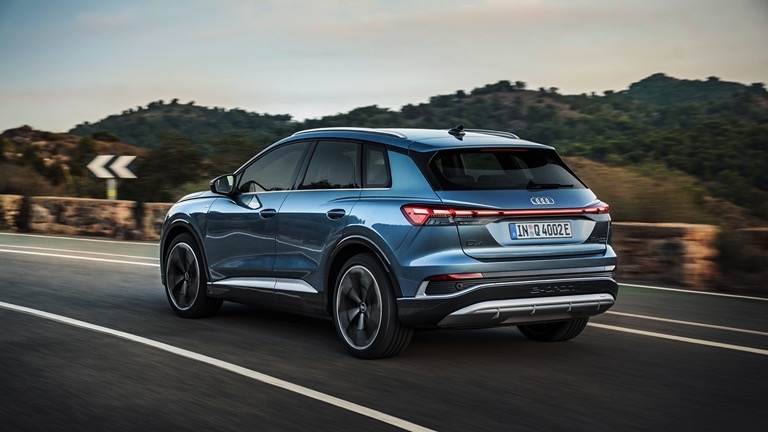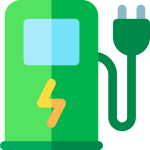
Audi arrives in 2025 with a broadened electric range designed to cover more of the mainstream and premium segments in Australia. The headline additions are the mid-size Q6 e-tron – a new-platform SUV aimed at long-range buyers – an updated e-tron GT with sharper performance and range credentials, and a more affordable Q4 e-tron positioned to win volume buyers seeking a premium badge below the $100,000 mark.
Overview of the 2025 Audi EV line-up in Australia
- Audi Q6 e-tron: a new mid-size electric SUV built on Audi’s next-generation platform. It promises longer range, much faster charging and a more tech-forward interior than the brand’s earlier electric models.
- Audi Q4 e-tron: retuned as Audi’s new entry-level EV for Australia, priced to appeal to buyers who would otherwise consider a Tesla Model Y or comparable mid-size EVs.
- Audi e-tron GT (updated): the coupe-style performance saloon gets a significant refresh with higher outputs, improved range and upgraded kit for a premium performance offering.
What’s new for 2025 – model by model
Audi Q6 e-tron
The Q6 e-tron is Audi’s most important global EV launch in this cycle. Underpinned by a new Premium Platform Electric (PPE)-derived architecture, the Q6 is engineered for higher efficiency and faster charging than Audi’s earlier e-tron models. For the Australian market the headline claims are:
- Variants: initial line-up includes Q6 e-tron Performance, Q6 e-tron quattro and a high-performance SQ6 e-tron.
- Battery and range: a roughly 100 kWh usable pack is expected, with Audi claiming WLTP-range potential in excess of 550 km for rear- or mid-range variants, depending on final spec and wheel choice.
- Charging: an 800-volt-capable electrical architecture with peak DC charging rates up to around 270 kW in higher-spec variants, enabling rapid top-ups on suitable fast chargers.
- Interior tech: a premium cabin with a 14.5-inch central touchscreen, an 11.9-inch digital instrument cluster and an optional 10.9-inch passenger display. Audi is also offering advanced features such as an augmented-reality head-up display and more sophisticated driver assistance and connectivity suites.
- Pricing (Australia): local pricing is expected to start from about $115,500 before on-road costs for the base Q6 e-tron. Final local specs and options, which influence pricing, will determine how competitive the line-up is in the market.
Audi Q4 e-tron
Positioned as Audi’s answer to growing demand for more affordable premium EVs in Australia, the new Q4 e-tron is aimed below the six-figure threshold.
- Platform and range: built on Volkswagen Group’s MEB architecture, the Q4 delivers solid real-world range, with some variants estimated at around 500-525 km WLTP depending on configuration.
- Safety and credentials: ANCAP five-star safety ratings are expected/maintained for the model in commonly specified trims.
- Pricing (Australia): Audi has signalled pricing from around $84,900 before on-road costs for the base Q4 e-tron, making it a clear rival to the Tesla Model Y and other mainstream premium EVs.
Audi e-tron GT (updated)
Audi’s athletic four-door gains performance and range upgrades for 2025, sharpening its appeal among buyers who prioritise driving dynamics.
- Variants: updated S e-tron GT and the range-topping RS e-tron GT continue to offer high-output powertrains and performance bias.
- Performance and range: technical tweaks raise both power output and efficiency, improving real-world driving range compared with earlier models.
- Pricing (Australia): the revised S e-tron GT is positioned from about $209,900 before on-road costs, with the RS at a premium above that.
Key themes and industry context for Australia in 2025
New-generation EV platform
Audi’s PPE-derived architecture for the Q6 e-tron represents a step-change in packaging and systems integration for the brand: higher voltage capability, greater charging throughput and more efficient electric drive units that together improve range and charging convenience. That’s important for Australian buyers who often travel long distances between chargers.
Interior tech moves mainstream
Audi is pushing more ambitious interior technology into line-ups beyond flagship models: larger central screens, passenger displays and optional AR head-up displays are no longer niche features. For Australian buyers, the emphasis on usable cabin tech – such as clearer navigation with live charging guidance and integrated charging network access – will be a selling point.
Faster charging and improved real-world range
Audi’s headline charging figures (up to ~270 kW for suitable Q6 variants and 800V architectures for performance models) address two enduring EV concerns in Australia: long-distance usability and charging time. These capabilities are meaningful only where compatible fast-charging infrastructure exists; Australia’s charging network has expanded rapidly through providers such as Chargefox, Evie Networks and Tesla’s Supercharger footprint, but coverage is still uneven in regional areas.
A more segmented EV strategy
Audi’s 2025 line-up underscores a clear segmentation approach: an accessible Q4 to win volume buyers, a Q6 aimed at family SUV and range-conscious purchasers, and the e-tron GT to retain halo and enthusiast appeal. That breadth helps Audi compete across price bands and customer needs in Australia, and reflects broader industry moves toward model portfolios that cover mass-market, premium and performance niches.
What this means for Australian buyers
- More choices at different price points: buyers who wanted an Audi EV but were priced out previously will find more realistic entry points with the Q4.
- Improved long-distance usability: higher charging rates and larger battery packs make weekend trips and long drives more practical, subject to charger availability.
- Higher-tech cabins: Audi’s focus on interior tech will appeal to buyers who value in-car digital features and passenger engagement on longer journeys.
- Consider total cost of ownership: running costs, local incentives, access to chargers, dealer servicing and residual values should all factor into buying decisions. On-road costs, registration, insurance and optional equipment materially affect the final price in Australia.
Conclusion
Audi’s 2025 EV strategy in Australia is about scale and choice. Introducing a new platform with the Q6 e-tron, broadening appeal with a competitively priced Q4 e-tron and refreshing the performance-focused e-tron GT signals that Audi aims to be relevant across the full EV buyer spectrum. For Australian consumers, this translates to better range, faster charging and more engaging cabin technology – but the real-world benefits will hinge on local pricing, specification and the continuing rollout of fast-charging infrastructure. If Audi delivers on the claimed figures and local specifications are competitive, the 2025 range could materially strengthen Audi’s standing in Australia’s rapidly evolving EV market.
Frequently asked questions
When will the Audi Q6 e-tron be available in Australia?
Audi has indicated the Q6 e-tron will arrive in global markets in 2024-25; local deliveries in Australia are expected to commence during 2025, subject to final homologation and allocation. Check with Audi Australia for exact ordering and delivery timelines.
How realistic are the claimed ranges for the Q6 e-tron and Q4 e-tron in Australian conditions?
Range figures are WLTP estimates and are generally optimistic compared with real-world Australian conditions (hotter climates, higher-speed highway driving and accessory use such as air conditioning). Expect real-world range to be lower than the WLTP number; choosing lower rolling-resistance tyres and conservative wheel sizes can help maximise range.
Do the Q6 and e-tron GT use 800V charging architecture?
The Q6 e-tron is designed around a next-generation high-voltage architecture with high peak charging capability (Audi has cited up to ~270 kW for some variants). The e-tron GT has used an 800V system in previous iterations, which supports very fast charging on compatible stations. Confirm specific charging specs for the exact trim you intend to order.
Will Audi offer government incentives or discounts in Australia?
In Australia, incentives for EVs vary by state and territory and are not consistently applied at a national level. Audi Australia occasionally offers drive-away promotions or competitive pricing structures, but buyers should factor in variable state incentives, stamp duty concessions (where applicable) and on-road costs when assessing value.
How does the Q4 e-tron compare with the Tesla Model Y?
The Q4 e-tron competes on badge, interior quality and safety credentials, and is pitched to be more affordable than prior Audi EVs. The Tesla Model Y currently competes strongly on range, charging network reach and software features. Choice between them will come down to priorities: dealer support and perceived build quality (Audi) versus software ecosystem and charging coverage (Tesla).
About EV Evolution
EV Evolution is the leading online platform dedicated to Australian electric vehicle owners and enthusiasts. We foster a vibrant community, delivering essential EV news and insights, and enhancing user engagement through our innovative, AI-powered chatbot for dynamic discussions. Our mission is to empower Australian electric vehicle owners and enthusiasts by fostering a vibrant, AI-driven online community that connects, informs, and advances the nation’s electric vehicle landscape.




